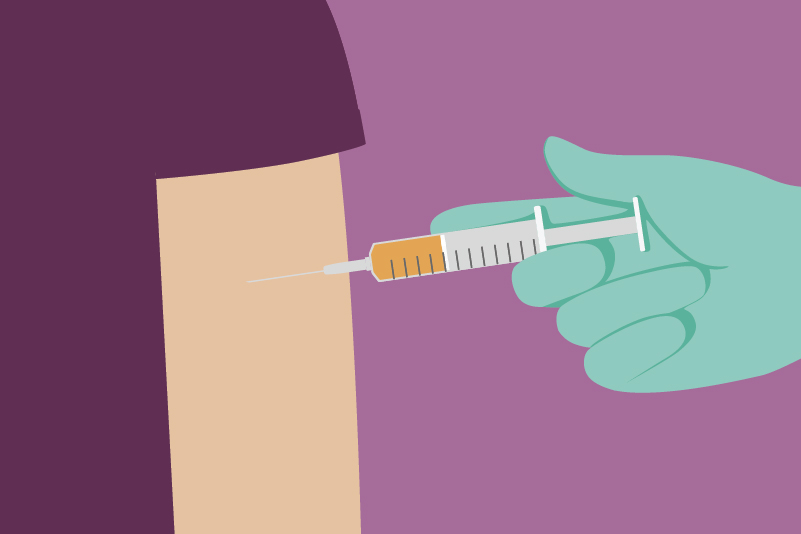#125 HPV Vaccine: Shot of Cancer (and Wart) Prevention

Reading Tools for Practice Article can earn you MainPro+ Credits
Join NowAlready a CFPCLearn Member? Log in
- Quadrivalent (HPV 6, 11, 16, 18) vaccine (Gardasil®):
-
- FUTURE 1:1 5,455 women followed four years. Decreased:
-
-
- External genital lesions (most commonly condyloma): 3.8% vs. 5.7% (placebo), number needed to vaccinate (NNV)=50.
- Cervical intra-epithelial lesions (CIN)≥2: 6.6% vs. 7.1% (placebo), not statistically significant.
-
-
- FUTURE 2:2 12,167 women followed three years. Decreased:
-
-
- CIN≥2: 3.6% vs. 4.4% (placebo), NNV=125.
-
-
- FUTURE 1/2 Combination:3 Followed four years. Decreased:
-
-
- External genital lesions (most commonly condyloma): 1.5% vs. 4% (placebo), NNV=40.
- CIN≥2 not reported.
-
- Bivalent (HPV 16, 18 vaccine) (Cervarix®):4 18,644 women followed four years. Decreased CIN≥2: 3.3% vs. 4.9% (placebo), NNV=60.
- Smaller studies showed similar effects.5,6 All studies:
-
- Excluded those pregnant, with previous abnormal pap results or genital warts, or with >4-6 lifetime sexual partners.
- Funded by vaccine manufacturers.
- Worldwide cervical cancer affects >500,000 women/year, most commonly in developing countries,8,9 while in Canada ~1500 women/year are diagnosed.10
- ~90% of women with cervical cancer have HPV.8,9 Women have ~50% chance of becoming HPV positive after three years of sexual activity.11
- Safety: serious adverse event rate similar to placebo. 1,2,4-7
- Future longer-term studies will delineate true impact on cervical cancer and whether booster needed.
- Current Canadian recommendations:12
-
- Gardasil®: Girls 9-45 years, boys 9-26 years.
- Cervarix®: Girls 10-25 years.







 Complete Activity
Complete Activity
CERVARIX is a vaccine also indicated in females from 9 to 45 years of age for the prevention of
cervical cancer (squamous cell cancer and adenocarcinoma) by protecting against the following
precancerous or dysplastic lesions caused by oncogenic Human Papillomavirus (HPV), types 16
and 18:
• Cervical intraepithelial neoplasia (CIN) grade 2 and grade 3
• Cervical adenocarcinoma in situ (AIS)
• Cervical intraepithelial neoplasia (CIN) grade 1